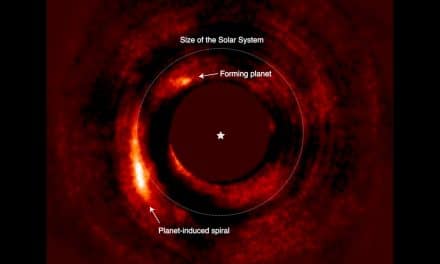MIT’s MOXIE experiment is reliably producing oxygen on Mars, regardless of whether it is day or night and during all seasons.
The Massachusetts Institute of Technology-led Mars Oxygen In-Situ Resource Utilization Experiment MOXIE, has been successfully making oxygen from the Red Planet’s carbon-dioxide-rich atmosphere since February 2021, when it touched down on the Martian surface as part of NASA’s Perseverance rover mission.
In a study published in the journal Science Advances, researchers report that by the end of 2021, MOXIE was able to produce oxygen on seven experimental runs, in a variety of atmospheric conditions, including during the day and night, and through different Martian seasons. In each run, the instrument reached its target of producing six grams of oxygen per hour — about the rate of a modest tree on Earth.
Michael Hecht, principal investigator of the MOXIE mission at MIT’s Haystack Laboratory, said: “We have learned a tremendous amount that will inform future systems at a larger scale.”
Jeffrey Hoffman, a professor at MIT’s Department of Aeronautics and Astronautics and MOXIE deputy principal investigator said: “This is the first demonstration of actually using resources on the surface of another planetary body and transforming them chemically into something that would be useful for a human mission. It’s historic in that sense.”
The researchers envision that a scaled-up version of MOXIE could be sent to Mars ahead of a human mission, to continuously produce oxygen at the rate of several hundred trees. At that capacity, the system should generate enough oxygen to both sustain humans once they arrive, and fuel a rocket for returning astronauts back to Earth.
So far, MOXIE’s steady output is a promising first step toward that goal, and it has shown it can reliably and efficiently convert Mars’ atmosphere into pure oxygen.
It does so by first drawing the Martian air in through a filter that cleans it of contaminants. The air is then pressurised and sent through the Solid OXide Electrolyzer (SOXE), an instrument developed and built by OxEon Energy, that electrochemically splits the carbon dioxide-rich air into oxygen ions and carbon monoxide.
The oxygen ions are then isolated and recombined to form breathable, molecular oxygen, or O2, which MOXIE then measures for quantity and purity before releasing it harmlessly back into the air, along with carbon monoxide and other atmospheric gases.
Hoffman stated: “The atmosphere of Mars is far more variable than Earth. The density of the air can vary by a factor of two through the year, and the temperature can vary by 100 degrees. One objective is to show we can run in all seasons.”
Hecht added: “The only thing we have not demonstrated is running at dawn or dusk, when the temperature is changing substantially. We do have an ace up our sleeve that will let us do that, and once we test that in the lab, we can reach that last milestone to show we can really run any time.
“The next run coming up will be during the highest density of the year, and we just want to make as much oxygen as we can. So we’ll set everything as high as we dare, and let it run as long as we can.”
This research was supported, in part, by NASA.













